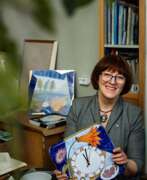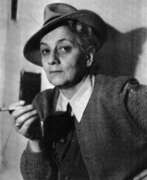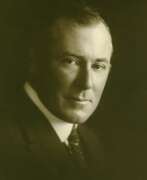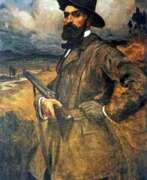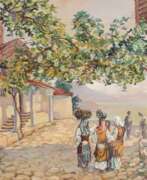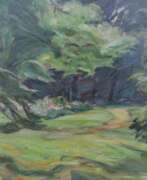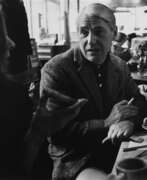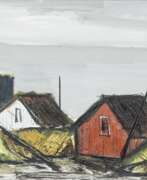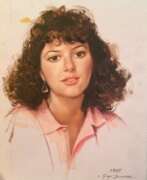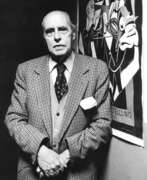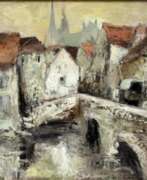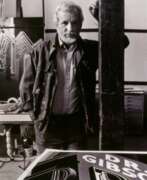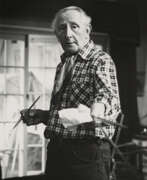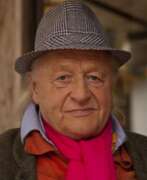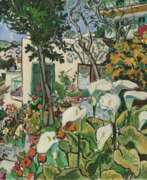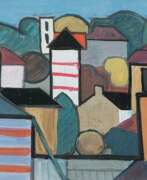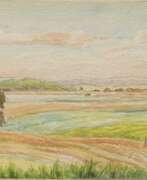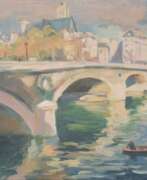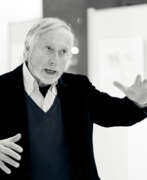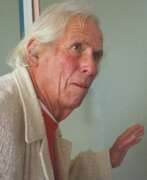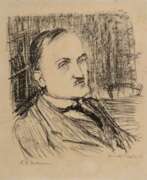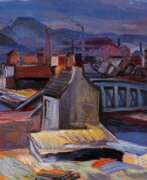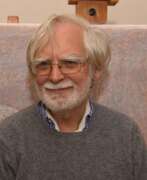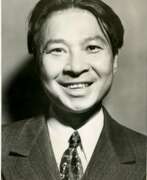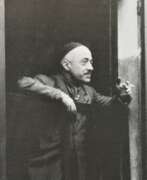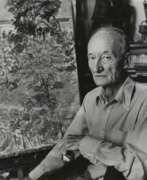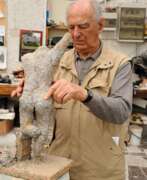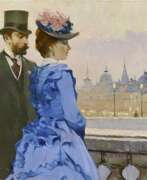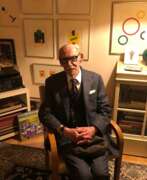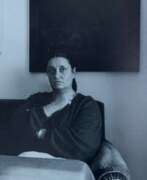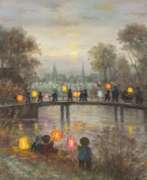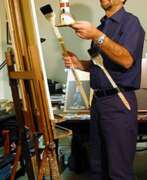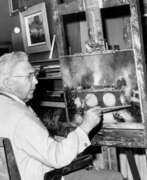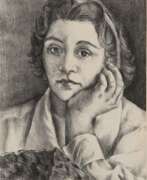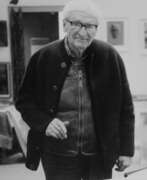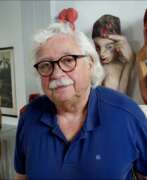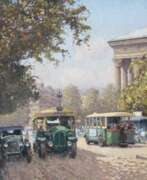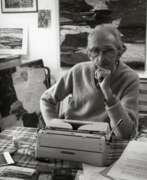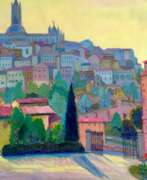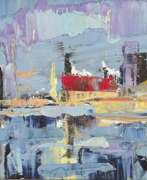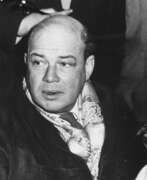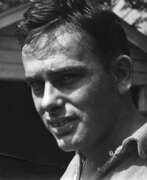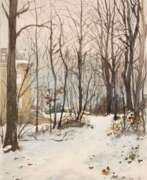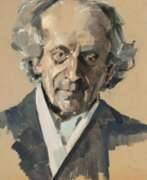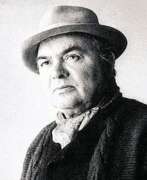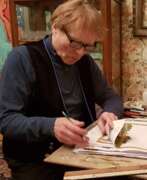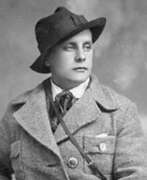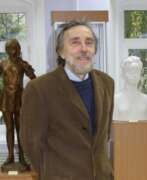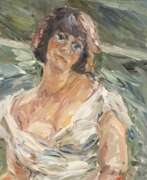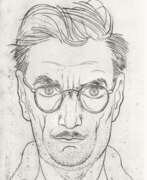Cityscape Post War Art
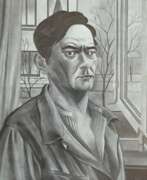

Christian Arnold was a German painter and graphic artist. He is best known for his landscape paintings that often depicted the rural and coastal regions of northern Germany.
Arnold studied at the Academy of Fine Arts in Munich and later taught at the School of Arts and Crafts in Bremen. His work was heavily influenced by the German Expressionist movement, and he often used bold colors and thick brushstrokes to create a sense of emotional intensity in his paintings.
In addition to his landscapes, Arnold also produced numerous portraits, still lifes, and religious works. He worked in a variety of mediums, including oil paints, watercolors, and printmaking.
Arnold's work was exhibited widely during his lifetime, and he received numerous awards and honors for his contributions to the arts. Today, his paintings are held in collections around the world, including the National Gallery in Berlin and the Kunsthalle Bremen.
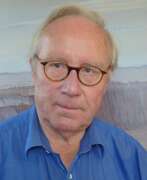

Gerhard Ausborn was a German painter. He studied painting at the Hamburg University of Fine Arts.
Landscapes, ancient sites and modern cities characterise the subject of Gerhard Ausborn's paintings. In parallel, he creates abstract compositions without objects.
The paintings are inspired by impressions the artist gathered during his numerous journeys to many countries around the world. The paintings were not created on location, but always afterwards in his Hamburg studio. They are not intended to be an exact copy of reality, but rather, in memory, what is seen is reduced to the essentials and combined with the artist's own ideas, sensations and experiences.


John Baeder is an American painter closely associated with the photorealist movement. He is best known for his detailed paintings of American roadside diners and eateries. His interest in small towns across America began when he was young by photographing old cars and other relics. He started working as an art director in Atlanta for a branch of a New York advertising agency in 1960, and subsequently moved to New York City in 1964. He went on to have a successful career in advertising through the early 1970s, while continuing to paint, draw and photograph on his own time. Baeder left the advertising field in 1972 to pursue his artistic career full-time. The same year, OK Harris Gallery in New York began exhibiting his artworks. Since then, he has had more than thirty solo exhibitions at art galleries. His work includes oil paintings, watercolors and photographs. Baeder’s work aims to chronicle the disappearing aspects of American culture. Baeder is the recipient of the Tennessee Governor's Distinguished Artist Award in 2009.
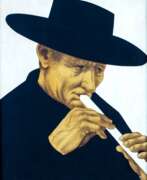

Arne Besser is a contemporary American artist. He received training as an artist at the Art Center School, Los Angeles. There he studied with John Audubon Tyler and Lorser Feidelsson. Beser’s approach to Photo-Realism is to draw from the urban landscape and nature a succinct “set like” image of reality. His city scenes depict New York street life alive with trading and traders, prostitutes and junkies looking for a fix. These visual images iconify the underside of urban life in a way that elevates this point of view to an almost mythic level.
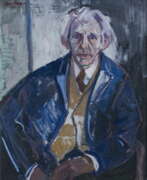

Tom Beyer is a German artist.
Beyer studied at the Düsseldorf School of Applied Arts, traveled throughout Europe, in 1931 opened a studio in Berlin and joined the Communist Party. Although the National Socialists who came to power in Germany in 1937 forbade him to exhibit, from 1939 to 1945 Beyer took part in World War II as a Wehrmacht soldier.
After the war, Beyer led an active social and artistic life. He was also a member of the Association of Visual Artists of the GDR and became its chairman in 1950. As a member of the SED, Beyer reflected in his works the socialist construction in his country, depicting nature and people. He created a large mural for the Löwenschen Saal hall in the Stralsund town hall. From 1972 he taught part-time at the Berlin-Weißensee School of Art.
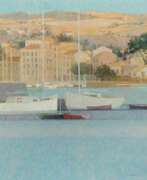

André Bourrié, full name André Georges Jules Louis Bourrié, was a French painter.
He was known for his city and seascapes, which used oil paint, sometimes mixed with chalk and sand to create a textural effect on the canvas.
Bourrier's work has been exhibited in galleries and museums around the world, including the Centre Pompidou in Paris and the Galleria Bohemia in New York.


Yves Brayer was a French painter and lithographer known for his landscapes, portraits and still lifes.
Brayer studied at the École Nationale Supérieure des Beaux-Arts in Paris and then in Rome. He was influenced by classical art and inspired by Mediterranean landscapes, which he often depicted in his paintings. He was also interested in the culture of ancient Greece, which influenced his work.
Brye's early work was inspired by the Cubist and Surrealist movements. He was a founding member of the Paris School, a group of artists working in the French capital in the mid-twentieth century. He was also a member of the French Academy of Fine Arts and a Knight of the Legion of Honour.
Bryeux's work has been exhibited in prestigious galleries and museums around the world, including the Louvre in Paris, the Museum of Modern Art in New York and the National Museum of Western Art in Tokyo. His paintings are in many private collections.
Over the course of his career, Brye has received numerous awards and honours, including the Grand Prix de Rome and the Prix de l'Institut de France. He is considered one of the most important French artists of the 20th century.


Herbert Breiter was a German-born Austrian painter and lithographer. He is known, in particular, for his landscape paintings, his "atmospheric scenes" and for the many views of Salzburg, his adopted home city, that he produced. His surviving output also includes still lifes and portraits.


Harry Callahan was an American photographer and artist who is best known for his innovative and experimental work in the mid-20th century. He was began his artistic career as a painter before turning to photography.
Callahan's photographic work was characterized by his interest in abstraction, pattern, and form. He often photographed everyday objects and scenes, such as street signs, buildings, and landscapes, and used his camera to explore the beauty and complexity of the world around him.
Callahan was also known for his work as a teacher, and he taught photography at the Rhode Island School of Design for many years. His students included notable photographers such as Aaron Siskind and Ray K. Metzker, and he was known for his rigorous and challenging approach to teaching.
Callahan's legacy as an artist and photographer continues to influence contemporary photography and art. His innovative techniques and distinctive style continue to inspire new generations of artists, and his work is recognized as a significant contribution to the history of photography.


Alois Carigiet was a Swiss graphic designer, painter, and illustrator. He may be known best for six children's picture books set in the Alps, A Bell for Ursli and its sequels, written by Selina Chönz, and three that he wrote himself. In 1966 he received the inaugural Hans Christian Andersen Medal for children's illustrators.
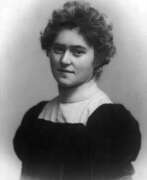

Maria Caspar-Filser was a German painter. She lived and worked mainly in Munich.
In 1913, she was the only woman among the founding members of the artists' association Münchener Neue Secession. In 1925 she became the first German woman painter to be awarded the title of professor. She taught at the Academy of Fine Arts in Munich.
Caspar-Filser primarily painted flowers, gardens and landscapes, influenced equally by Impressionism and Expressionism.
The Nazis considered Caspar-Filser's paintings "degenerate".
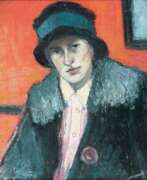

Gabriele Daube is a German artist known for her cityscapes and still lifes.
Gabriele Daube's works are often characterized by bold colors and expressive brushwork. She drew inspiration from the natural world, including city and seascapes.
In addition to painting, Daube also worked as a graphic artist and illustrator.


Adolf Dehn was an American artist known mainly as a lithographer. Throughout his artistic career, he participated in and helped define some important movements in American art, including regionalism, social realism, and caricature. A two-time recipient of the Guggenheim Fellowship, he was known for both his technical skills and his high-spirited, droll depictions of human foibles. In the 1930s, his work began to appear in magazines such as The New Yorker and Vogue. During his period as a lithographer, his striking images of New York, including Central Park, captured the essence of the Roaring 20s and the 1930s Depression. Beginning in 1930, Dehn executed a significant number of drawings and lithographs based on Midwest scenes. In the early 1930s, Dehn established The Adolf Dehn Print Club and became a founding member of the Associated American Artists. Dehn started executing watercolors in late 1936. Watercolor painting and casein painting represented signature second and third arms of Dehn's artistic output for the rest of his career. He is remembered as a prolific artist of great range. His works are held in over 100 museums. Dehn had a distinct style of illustration and painting. His drawings exhibit freedom in line and form along with social satire. Dehn's landscapes suggest the grandeur of nature, and a signature element in them for which Dehn was praised was the magnificence of his clouds.
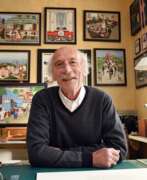

Henry Dieckmann was a German self-taught painter known for his genre naive paintings.
After World War II, Dieckmann worked at the German Federal Railroad factory in Verden and observed life around him. His paintings are imbued with nostalgia for the recent past; they illustrate the everyday life of ordinary people in their spare time with typical European cityscapes.
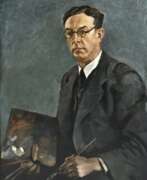

Paul Dom, born Paulus Ludovicus Carolus Dom, was a Belgian and Dutch painter and illustrator.
He studied at the Royal Academy of Fine Arts in Antwerp, lived in Belgium and the Netherlands, was granted Dutch citizenship in 1936 and lived in The Hague for the rest of his life.
Paul Dom was a versatile artist. He dabbled in drawing and painting and painted portraits, cityscapes and sketches, and genre scenes. At the same time he was a political cartoonist and illustrated books. Between 1917 and 1956 Dom illustrated hundreds of books, mostly for children.
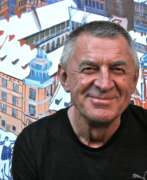

Edward Dwurnik was a Polish expressionist painter and graphic artist. Between 1963-1970 he studied painting, drawing and sculpture at the Academy of Fine Arts in Warsaw. He quickly became one of the most important figures of the Polish contemporary art scene.
Edward Dwurnik is best known for his large-scale paintings depicting everyday life, cityscapes and crowds of people. He often used bold, bright colours and strong black outlines to create his distinctive style. Many of his works depict the absurdity and contradictions of modern life in Poland and the struggles of ordinary people against political oppression and social injustice.
Throughout his career, Dwurnik's art has evolved and diversified, covering a wide range of techniques and themes. In addition to painting, he also worked in printmaking and drawing.


Teo Eble was a Swiss abstractionist painter and graphic designer.
Eble studied at the Academy of Fine Arts in Berlin, then taught at the Basel School of Applied Arts from 1931 to 1967. In 1933 he co-founded the Swiss Group 33, an anti-fascist association of artists.
His work was influenced by the realist, objective painting of the 1920s. The subjects of Eblé's early works were landscape paintings and depictions of cities and their life.
In 1934, Eblé began abstract painting and became a prominent artist of the abstract movement in Switzerland and was also recognized internationally. He held exhibitions in France and the United States, in 1958 at the Venice Biennale and in 1959 at Documenta in Kassel. In the 1960s, Eblé created numerous murals in public buildings.
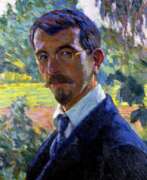

Wilhelm Heinrich Ernst Eitner was a German painter of the late nineteenth and first half of the twentieth centuries. He is known as an impressionist painter and teacher.
Eitner produced portraits, landscapes, and woodcuts in a style reminiscent of Japanese art. Despite initial rejection in German society of his impressionist style of painting, over the years he gained recognition and even the title "Claude Monet of the North." Eitner was a member of numerous art associations. His works are preserved in the Hamburg Kunsthalle.


Bruno Erdmann was a German artist of informal and concrete painting. He was known for his contribution to the field of abstract art.
Bruno Erdmann's work was mainly focused on abstraction, where he sought to express emotions and ideas through non-representational forms and colours. He adopted the principles of abstract expressionism, emphasising spontaneous and gestural brushwork as well as an exploration of texture and surface.
Throughout his career, Erdmann experimented with various materials and techniques, including oil and acrylic paints, mixed media and collage. He often used bright and bold colours, creating dynamic compositions that conveyed a sense of energy and movement.
Although Erdmann's work is associated with abstraction, he explored other artistic styles and genres throughout his career. He experimented with figurative elements, landscapes and still lifes, demonstrating his versatility as an artist.


Richard Estes is an American artist, best known for his photorealist paintings. The paintings generally consist of reflective, clean, and inanimate city and geometric landscapes. He is regarded as one of the founders of the international photo-realist movement of the late 1960s, with such painters as John Baeder, Chuck Close, Robert Cottingham, Audrey Flack, Ralph Goings, and Duane Hanson.


Arthur (Usher) Fellig, known by his pseudonym Weegee, was a photographer and photojournalist, known for his stark black and white street photography in New York City.
Weegee worked in Manhattan's Lower East Side as a press photographer during the 1930s and 1940s and developed his signature style by following the city's emergency services and documenting their activity. Much of his work depicted unflinchingly realistic scenes of urban life, crime, injury and death. Weegee published photographic books and also worked in cinema, initially making his own short films and later collaborating with film directors such as Jack Donohue and Stanley Kubrick.
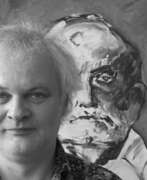

Detlev James Foth is a German painter. He studied free painting at the Düsseldorf Art Academy from 1979 to 1985. During the second semester his first solo exhibition took place at the Galeria de Arte Sala Goya in Palma de Mallorca, Spain. In 2001 he received an invitation from the Foreign Office in Berlin to hold a solo exhibition at the German Business Club in São Paulo, Brazil. He was the first German artist to have a solo exhibition at the Portuguese Cultural Institute (Instituto Camões) in Luanda, Angola. In 2012 the painter had, among other things, a solo exhibition at the Arthropologie Gallery, Cairo, Egypt. His works can be found in private collections and in public spaces. In addition to painting, Detlev Foth deals with literature and has published numerous plays, novels, short stories and poems.
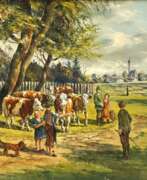

Alfred Fritzsching is a German artist known as Painter, graphic artist, draftsman, sculptor, commercial, commercial graphic artist. He began his training as a commercial graphic artist at the Blocherer School for Graphic and Advertising in Munich and worked as an advertising specialist. In 1970 Alfred Fritzsching became a member of Munich Artists 'cooperative and participated in exhibitions at the Haus der Kunst in Munich. From 1978, he worked as a freelance painter and also as board member and juror of the Munich Artists' Cooperative.
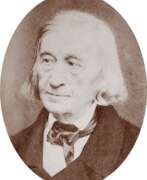

Willem Grimm was a German painter and graphic artist.
Already during his studies he made a name for himself, especially with his experimental graphics. After several guest exhibitions at the Hamburg Secession, he became an official member in 1929/30. In the early 1930s, at the age of 27, he was already one of Hamburg's most important artists.
In addition to classical genres such as portraits, landscapes and still lifes, Grimm worked from 1931 on the Rummelpott-Szenen motif, which in time became characteristic of his work.
The National Socialist repressions affected Willem Grimm less than many of his fellow artists. Still, in 1937 seven of Grimm's works were confiscated from the Kunsthalle Hamburg, the Hamburg Arts and Crafts Museum and the Nissenhaus Husum Museum as part of the "Degenerate Art" campaign and subsequently destroyed.


Georg Grulich was a German painter.
In Düsseldorf, he documented the reconstruction after the Second World War and the advent of modernism, created monumental cityscapes of the new state capital and is still considered "the" Düsseldorf city painter of the post-war and reconstruction years. His works were shown in exhibitions in Venlo, Maastricht, Oostende, Geneva, Montecatini, Krakow and Moscow. He also participated in the design of the Düsseldorf carnival. In addition, Grulich was a member of the artists' association Malkasten, the Rhenish Secession (1947-1957) and district chairman of the West German Artists' Association (1957-1971).


Haddad Maurice is a contemporary painter from South Iraq. Encountering the work of Haddad Maurice for the first time, one can not help noticing the diversity of his compositional approaches, his media and materials. There are water color paintings that at first sight seem almost conventional, but that bear witness to an awareness of country life, sharp observation, an ability to catch moods. The works showing Iraqi women, real beauties, one might say, are close to folk art: bright, colorful, geometrical, and basically well-balanced in their formal language that relies on curves, segments of circles intercutting each other. Some works are mythological both in their formal language and their historical reference. In the case of these works, often wood instead of canvas is used as a surface.


Han Hsiang-ning is a Taiwanese-American artist. Han has participated in many prominent museum exhibitions. He often uses spray painting and paints photo-realistic street scenes. In 1961, he joined the "Fifth Moon Group". He began abstract form oil painting, and his works first appeared in the magazine Pen Review. In 1963 he began working with roller and stencils on rice paper, still abstract, emphasizing form and space structure. In 1969 he began spray painting works using acrylic paint on canvas, created the "Invisible Image" series. In 1971, in the process of spray gun painting, found how to create different combinations of sprayed color dots, a form of pointillism. In 1971 he continued the spray gun technique, but began using New York city-scenes as a subject and his camera as sketching tool. In 1972 he launched studies on industrial scenes with vivid images. He completed his first self-portrait in 1981. In 1983 he began using brushes to paint watercolor and ink on paper. His subjects being street crowds and bird's eye views of intersections of New York streets.


Zacharias Heinesen is a Faroese painter. He is the son of the writer and artist William Heinesen.
His works include oil paintings, watercolour paintings, drawings, woodcuts, lithographs and paper collages.
His paintings were featured on a series of stamps in June 2001.


Gus Heinze is an American photorealist painter. During the 1950s and 1960s he worked as a freelance commercial artist on Madison Avenue. In 1970 he began his career as a photorealist painter in Bondville, Vermont; many of his paintings from this period depict parts of automobiles and motorcycles in close-up. In 1978 Heinze began exploring more diverse subjects. He increasingly moved toward storefront-window and city scenes, in a style that he calls "abstract realism," where the subject is real but the point of view and composition give the painting an abstract quality. In addition to his urban subjects, Heinze has also painted dilapidated farm equipment such as tractors and water pumps, and old trains and locomotive engines. He has also done series of paintings depicting rocky cliffsides, vineyard grapes, and streams; much of his subject matter is characterized by complex reflections off glass or water, intricate foliage, and deep background blacks with saturated colors in the foreground.


Albert Heinzinger, born in 1911 in Kempten im Allgäu, Germany, was an artist whose life and work were as compelling as his art. He began his career with an apprenticeship as a chemigrapher before studying graphic arts under Ludwig von Herterich in Munich. Heinzinger's journey as an artist took a more profound turn as he evolved into a painter and woodcutter.
His life was marked by significant challenges and political engagement. Heinzinger was a member of the Socialist Workers' Party and actively participated in resistance activities. This led to his imprisonment as a political prisoner in the Papenburger concentration camp Moor from 1938 to 1941. After his release, he resumed his artistic career in Munich from 1946.
Heinzinger's education continued under Professor Adolf Schinnerer at the Munich Academy from 1946-47. His artistic endeavors were enriched by study trips to various countries, including Italy, Yugoslavia, France, and England. He was a pivotal figure in the post-war art scene in Munich, contributing to the establishment of the "New Realism" art movement and being a founding member of the Association of Visual Artists in Munich.
Albert Heinzinger's artistic legacy is preserved through his works that have been auctioned. His dedication to painting and woodcutting, along with his significant contributions to political art and social commentary, make him an intriguing figure for collectors, auctioneers, and experts in art and antiques. Heinzinger's life story adds an enriching context to his artworks, which are not only visual treats but also historical narratives.
For those interested in learning more about Albert Heinzinger and keeping updated with related events and sales, it would be beneficial to sign up for newsletters and updates. This will ensure that they remain informed about the latest opportunities and developments related to Heinzinger's works.
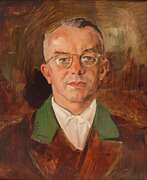

Peter Hirsch is a German painter, graphic artist and draftsman as a child private lessons in painting, apprenticeship as a lithographer, studied at the Munich Academy. He loaded exhibitions in the Munich Glass Palace and in the Kunstverein, ostracized as "degenerate" in Germany 1933-45 partly active in the USA, Canada, the Netherlands, Italy, England, France, Hungary and Switzerland, from 1944 temporarily relocated to the Schliersee, before 1930 -1969 lecturer at the Munich Adult Education Center.
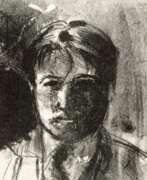

Søren Hjorth Nielsen was a Danish painter and illustrator. He is remembered for his paintings of the allotments and outskirts of Copenhagen and later for his landscapes of the Bramsnæs Vig area in northwestern Zealand. He was a professor of painting at the Royal Danish Academy of Fine Arts from 1957 to 1971.
His painting was essentially realistic, sometimes bordering on the grotesque. For a time he also worked as a portrait painter. His favourite subjects included the allotments and harbour districts of Copenhagen. His landscapes included summer scenes at Vester Åby on Funen and around Bramsnæs Vig on the west coast of Zealand; the houses and vegetation in the bottom half of the paintings contrasted with the stillness of the low-set horizon. In his later years, he painted a number of summer and winter scenes from his house at Tempelhuse to the south-east of Holbæk.
His work developed from Expressionism in his early years to participation in the renewal of Danish landscape painting. He was also active in etchings and woodcuts covering studies of models at the Academy, sketches during his travels or landscape depictions. He was also a keen draftsman, often producing crayon drawings as a basis for his oils.
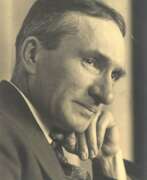

Holmead, born Clifford Holmead Phillips, was a painter. From about 1920 he joined various artist colonies in New England. In 1923, some of his paintings were shown for the first time as part of an Art Association exhibition. They were delicate, airy idylls, traditional landscapes in a brittle, silvery light, lonely farmhouses and trees. But he found the painting practiced there to be too beautiful and looked for new inspiration. In Paris, seeing a work by the French Expressionist and Fauvist Maurice de Vlaminck caused a fundamental change in his view of art. Vlaminck's dynamic lines and strong colors impressed Clifford Holmead Phillips so much that he increasingly followed the expressive direction, but later defined his style as "Crude Expressionism". From the 1920s to 1940, he celebrated international success and exhibited in important galleries and museums on both continents.


Tom Walter Hops was a German artist, landscape painter, mosaic artist and graphic artist.
In 1945 Tom Hops joined the Hamburg Group of Artists and became a member of the Rotary Club of Hamburg. His paintings received flattering reviews, and numerous awards confirm his success: in 1943 he received the Dürer Prize of Nuremberg, in 1959 - the Ernst Reuter Prize in Berlin, in 1960 - the Edwin Scharff Prize in Hamburg. In 1954 Tom Hops became the first Hamburg artist to have his works exhibited in a New York gallery after the war. In 1974 he was awarded the title of professor.
In addition to colorful landscapes and city views, Hops also created art in public spaces: glass mosaic windows, murals, tile stele and ceramic mosaics.
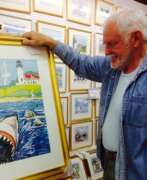

Robert Edward Kennedy, an American artist born in Boston, is renowned for his evocative paintings and illustrations. His journey in art began at the Rhode Island School of Design, where he honed his skills in painting and illustration. Kennedy's art is deeply influenced by his travels across the Caribbean, Mexico, and Florida, where he captured the essence of these locales in his sketchbook and watercolors. His work is more than just art; it serves as a historical record, showcasing the vibrant streets, waterfronts, and popular pubs of America's colorful areas.
Kennedy's art is characterized by its meticulous detail and classic style, combined with a heartwarming flair. This unique blend has earned him a place as one of America's top-selling artists. His popularity is a testament to his ability to connect with art enthusiasts worldwide. Kennedy's contributions to the art world extend beyond his paintings. In 1968, he and his brothers opened their first studio in a 19th-century stable on Beacon Hill, Boston. By the mid-1980s, Kennedy Studios had expanded to 37 locations, from Kennebunkport to Key West. Bob Kennedy's role in this expansion was crucial, as he provided numerous drawings and watercolors that represented iconic East Coast landmarks.
A notable innovation by Kennedy in the art world was his coining of the term "giclee" in 1995. This term was used to describe the advanced inkjet fine art reproduction technique, a significant step forward from the traditional offset lithography of the time. This innovation reflects Kennedy's forward-thinking approach and his contributions to modernizing art reproduction techniques.
Among Kennedy's well-known works are his watercolor prints, such as "Make Way For Ducklings" and "Provincetown Sail." These pieces have been sought after in the art market, showcasing his skill in capturing the essence of American landscapes and scenes.
For collectors, auctioneers, and art and antiques experts, Kennedy's work represents a blend of traditional artistry with modern innovation. His paintings and prints are more than just visual experiences; they are journeys into the heart of American culture and history.
For those interested in the dynamic world of Robert Edward Kennedy's art, we invite you to sign up for updates. By subscribing, you'll be the first to know about new product sales and auction events related to Kennedy's work. Stay connected with us and don't miss out on the opportunity to explore and acquire pieces from one of America's most celebrated artists.
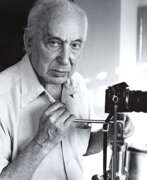

André Kertész, born Andor Kertész, was a Hungarian-born photographer known for his groundbreaking contributions to photographic composition and the photo essay. In the early years of his career, his then-unorthodox camera angles and style prevented his work from gaining wider recognition. Kertész never felt that he had gained the worldwide recognition he deserved. Today he is considered one of the seminal figures of photojournalism.
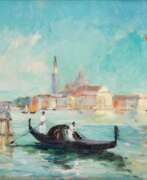

Serge Kislakoff was a French artist and decorator of Russian origin. He is the author of numerous film posters.
Serge Kislakoff painted city views and scenes (Montmartre, Paris boulevards, carnivals in Nice and Cannes), landscapes, harbour views (south of France, Sweden), religious subjects inspired by Old Russian painting. He was also involved in the restoration of church paintings.
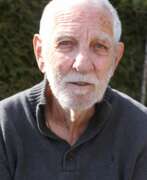

Elmar Kopp is an Austrian painter and sculptor, received artistic training from Toni Kirchmayr in Innsbruck. Despite losing his right hand in a work accident in 1949, he studied painting under Josef Dobrowsky and Herbert Boeckl, and sculpture under Fritz Wotruba at the Academy of Fine Arts in Vienna from 1951. Kopp completed his studies in 1954 and became a freelance artist in Imst. He created landscape, floral, and figurative paintings, as well as numerous public artworks such as sculptures, frescoes, sgraffiti, and mosaics. Kopp also provided designs for stained glass windows and tapestries woven by his wife, Midi. He traveled extensively throughout Europe, Africa, and Asia. In 1982, he was awarded the title of Professor by President Rudolf Kirchschläger.


Nikifor Krynicki, born as Epifaniy Drovnyak, was a Lemko naïve painter. Nikifor painted over 40,000 pictures – on sheets of paper, pages of notebooks, cigarette cartons, and even on scraps of paper glued together. The topics of his art include self-portraits and panoramas of Krynica, with its spas and Orthodox and Catholic churches. Underestimated for most of his life, in his late days he became famous as a naïve painter.


